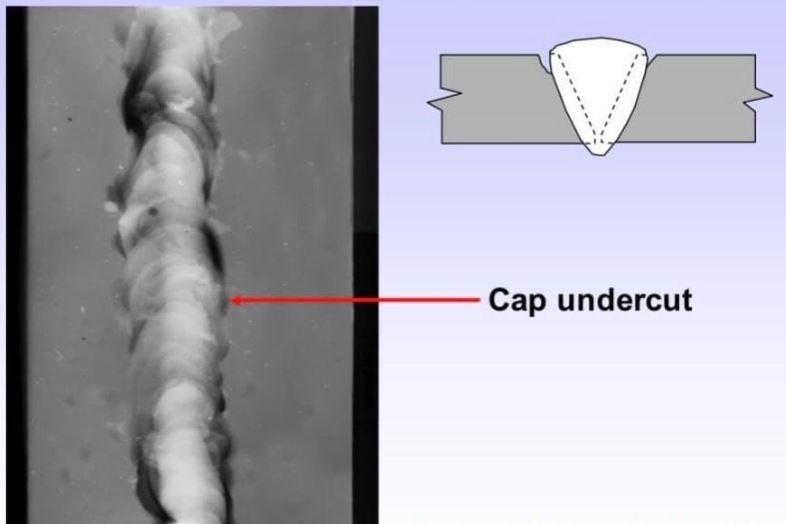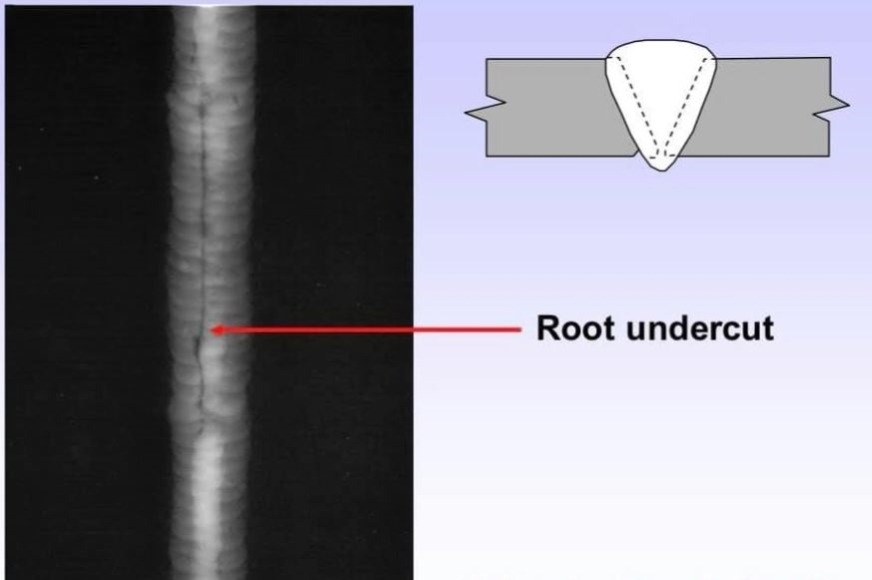Necessary Tips for Welders: Stopping Undercut Welding and Ensuring Stronger Weld Joints
In the realm of welding, attaining strong and sturdy weld joints is the keystone of generating top notch work. One usual obstacle that welders frequently experience is undercut welding, which can endanger the honesty of the weld joint. By understanding the factors that add to damaging and executing the right strategies and safety measures, welders can properly stop this problem and guarantee the long life and strength of their welds. Let's discover some essential ideas that can help welders navigate this difficulty and raise the top quality of their welding jobs.

Comprehending Undercut Welding
Undercut welding is a typical welding defect that takes place when the weld metal falls short to effectively load the groove and results in a groove-like depression along the weld bead. This flaw deteriorates the weld joint, making it at risk to splitting and failing under tension. Damaging can be triggered by numerous elements, including too much welding present, high welding speed, improper electrode angle, inaccurate electrode size, and inadequate welding strategy.
One of the major factors for undercut welding is an inequality in between the welding current and the welding speed. If the welding current is too expensive or the welding rate is too fast, the weld metal might not properly fill the groove, leading to damaging. Furthermore, using an electrode that is too big can lead to a comparable result, as the excess steel can not properly move right into the groove.
To stop undercut welding, welders ought to ensure they are making use of the right welding specifications, maintain an ideal electrode angle, pick the proper electrode size, and practice proper welding methods. By dealing with these elements, welders can minimize the risk of damaging and produce more powerful, a lot more trusted weld joints.
Appropriate Welding Technique
Efficient welding strategy plays an important function in guaranteeing the high quality and integrity of weld joints. One essential facet of correct welding strategy is maintaining the correct angle and range in between the welding gun and the work surface.
Additionally, a regular and consistent hand activity is vital for developing solid and resilient weld joints. Welders should intend for smooth, consistent activities to guarantee also distribution of the weld material. Correct manipulation of the welding weapon and filler material is also key to achieving optimum infiltration and combination.
In addition, managing the warmth input and choosing the ideal welding criteria based on the product being bonded are crucial consider achieving top quality welds - Preventing weld undercut. Welders need to comply with the suggested setups provided by welding procedure specifications and adjust them as required based on the certain demands of the project. By understanding proper welding methods, welders can substantially improve the toughness and integrity of their weld joints
Picking the Right Electrode
When taking into consideration the significance of picking the right electrode in welding applications,Keeping the appropriate angle and distance between the welding gun and the work surface is basic. The selection of electrode plays a critical duty in figuring out the top quality and stamina of the weld joint. Electrodes can be found in various types, each designed for particular functions and materials.
To start with, picking the appropriate electrode size is essential. Thinner electrodes appropriate for welding slim products, while thicker electrodes are better for thicker products and greater warmth applications. Matching the electrode diameter to the density of the work surface helps achieve a well balanced weld.
Secondly, recognizing the product make-up of the electrode is crucial. Various electrodes are developed for welding specific materials like steel, stainless steel, light weight aluminum, or cast iron. Making use of the right electrode product makes certain excellent blend and lessens the danger of flaws in the weld.
Last but not least, taking into consideration the welding position and strategy is crucial when choosing the electrode kind. here For example, certain electrodes are better suited for overhead or upright welding settings, while others function well for level or straight placements. Picking the appropriate electrode based on the welding strategy boosts the total weld high quality and integrity.
Preparing the Base Steel
To make sure an effective welding procedure, what first steps should be taken when preparing the base steel for welding? use this link Additionally, any type of existing weld material or residue from previous welding need to be gotten rid of to guarantee a tidy surface for the brand-new weld.

Performing Post-Weld Examinations

After conducting these assessments, welders should contrast the outcomes versus market criteria and project demands to make sure that the weld joint fulfills all required standards. Any kind of discrepancies or insufficiencies discovered during the post-weld inspection ought to be immediately attended to with ideal restorative steps to assure the weld's stability. By vigilantly executing post-weld evaluations and without delay addressing any issues, welders can promote the high quality and dependability of their job, ultimately adding to the security and longevity of the bonded frameworks.
Conclusion

In verdict, avoiding undercut welding and making certain more powerful weld joints need a mix of correct welding method, choosing the best browse around this site electrode, preparing the base steel properly, and conducting post-weld assessments. By recognizing the reasons for undercut welding and applying the required safety measures, welders can create top notch weld joints that fulfill market criteria and make certain the architectural honesty of the welded components.
Undercut welding is an usual welding flaw that occurs when the weld steel fails to appropriately fill up the groove and results in a groove-like anxiety along the weld grain (Preventing weld undercut). Undercutting can be caused by numerous elements, consisting of excessive welding present, high welding speed, inappropriate electrode angle, inaccurate electrode dimension, and inadequate welding strategy
One of the main factors for undercut welding is a discrepancy in between the welding present and the welding speed. If the welding current is as well high or the welding rate is too quickly, the weld steel may not appropriately fill up the groove, leading to damaging.Keeping the appropriate angle and distance between the welding gun and the work surface is basic when considering the significance of selecting the appropriate electrode in welding applications.